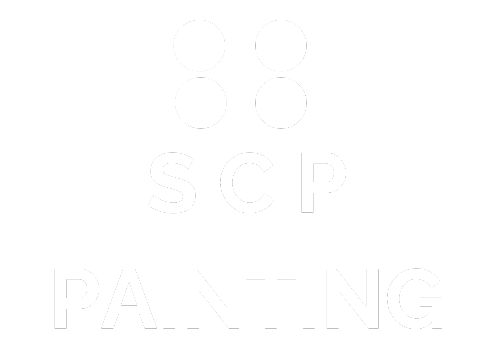
In the dynamic Australian urban landscape, strata buildings proudly serve as pillars of affordable housing, catering to a diverse population. Despite their pivotal role, these structures face challenges that go beyond mere aesthetics, encompassing issues like property devaluation, increased maintenance expenses, and potential health risks arising from paint deterioration. Strata property owners must grasp the underlying factors contributing to this concern, fostering a proactive approach to maintenance and preservation. This comprehensive guide seeks to illuminate the prevalent causes, preventive strategies, and signs, offering recommended actions to address the nuanced challenge of paint deterioration in strata buildings.
What are the common causes of paint deterioration in strata buildings?
Several factors may lead to the deterioration of paint in strata buildings. Among the most prevalent are:
- Weather exposure:
 Australia’s climate, marked by varying degrees of rain, intense sun, and persistent winds, takes a toll on exterior surfaces. Paint, being the first line of defence, often bears the brunt of these elements, resulting in fading, cracking, and peeling over time.
Australia’s climate, marked by varying degrees of rain, intense sun, and persistent winds, takes a toll on exterior surfaces. Paint, being the first line of defence, often bears the brunt of these elements, resulting in fading, cracking, and peeling over time.
- Moisture:
Moisture intrusion is a significant contributor to paint deterioration. Leaks within the building or poor ventilation can lead to moisture penetration into the substrate, accelerating the degradation process.
- Salt spray:
For strata buildings near the coast, the corrosive effects of salt spray can exacerbate paint deterioration. Coastal property owners must be particularly vigilant, considering the unique challenges posed by the proximity to the sea.
- Inappropriate paint type:
The choice of paint type is critical. Using paint that is ill-suited to the specific environmental conditions of a strata building can result in premature deterioration. It is essential to select a paint designed to withstand the harsh elements to ensure durability.
- Poor surface preparation:
The longevity of a paint job hinges on proper surface preparation. Inadequate cleaning, failure to remove loose paint, and neglect to address cracks can compromise the adhesion of the paint, leading to premature flaking.
How can you prevent paint deterioration in your strata building?
Prevention is always better than cure, and when it comes to paint deterioration, a proactive approach is essential. By implementing preventive measures, strata building managers and owners can safeguard the beauty and value of their shared property.
- Regular maintenance:
Regular inspections are the cornerstone of effective preventive maintenance. Strata property owners should conduct routine checks, identifying early signs of damage such as cracks, paint peel or blisters on interior walls. Timely repairs arrest deterioration and mitigate potential future issues like water ingress and structural instability. Taking a proactive approach can significantly reduce maintenance costs and preserve the value of the strata building.
- Use high-quality paint:
Investing in high-quality paint is a wise decision for strata property owners. Quality paints, specifically designed for the challenging conditions of strata buildings, offer enhanced durability, ensuring a longer lifespan for the paintwork.
- Proper surface preparation:
Thorough surface preparation is non-negotiable. Before applying a new coat of paint, ensure the surface is clean and free of loose paint, and that any cracks are adequately filled. Proper preparation optimizes adhesion, extending the life of the paint.
- Protect from weather and moisture:
Applying a sealant serves as an additional layer of protection against the elements. Proper ventilation is equally crucial to mitigate the impact of moisture, a pervasive factor in paint deterioration.
What are the signs of paint deterioration?
Several indicators may suggest the deterioration of paint on your strata building. Some of the prevalent signals include:
- Fading: It is the first indication of paint degradation. The loss of colour compromises the aesthetic appeal of the building. Regular inspections enable property owners to detect fading early on, allowing for proactive measures.
- Cracking: Cracks in the paint not only mar the appearance but also provide a pathway for moisture to penetrate the substrate. Addressing cracks promptly prevents further structural damage.
- Peeling: It is a clear indicator of a failure in adhesion. Timely intervention not only preserves the visual appeal but also prevents more extensive issues from arising.
- Chalking: It refers to the formation of a powdery surface that can be rubbed off easily. Regular cleaning and maintenance are essential to prevent this common form of paint deterioration.
- Blistering: Bubbles forming under the paint surface, often due to moisture, signify blistering. Identifying and addressing the root cause is crucial to prevent further deterioration and structural damage.
What measures should be taken when you recognise signs of paint damage?
If you notice signs of paint deterioration on your strata building, it is important to take action as soon as possible. This will help to prevent further damage and will also help to improve the appearance of the building.
Here are some tips for what to do if you notice the signs:
- Inspect the area: Upon noticing signs of paint degradation, a thorough inspection is the first step. Understanding the extent and cause of the damage is crucial for informed decision-making regarding repairs.
- Repair promptly: Prompt repairs are imperative to prevent the escalation of deterioration. Addressing the identified damage promptly preserves the building’s appearance and safeguards its structural integrity.
- Consult a qualified strata painter: Engaging the services of a qualified strata painter is a prudent course of action. These professionals possess the expertise to assess the damage comprehensively and recommend effective repair solutions tailored to the unique needs of strata buildings.
Conclusion
While paint deterioration is an inherent challenge in strata buildings, vigilant maintenance and informed care can completely prevent it. Strata property owners play a critical role in preserving the appearance and structural integrity of their buildings by implementing the outlined preventive measures. By understanding the causes, signs, and appropriate responses, property owners contribute to the longevity of their strata buildings, ensuring they remain not just structures, but vibrant, well-maintained communities that resist the onslaught of structural degradation.
As you delve into the intricate world of strata building maintenance, the significance of safeguarding your property against the challenges of paint deterioration becomes abundantly clear. At SCP Painting, we understand the nuances of preserving the aesthetic appeal and structural integrity of your strata building. Our expert team is well-versed in the specific requirements of Australian conditions, offering tailored solutions to combat the common culprits of weather exposure, moisture, and more in Sydney’s environment. Whether you’re seeking a fresh coat of high-quality paint or addressing signs of deterioration, our qualified strata painters stand ready to elevate your property’s longevity and appearance. Take proactive steps to protect your investment in Sydney by partnering with SCP Painting — where expertise meets excellence in strata-building care. Contact us today and let’s ensure your Sydney strata building remains a testament to enduring quality and visual appeal.

